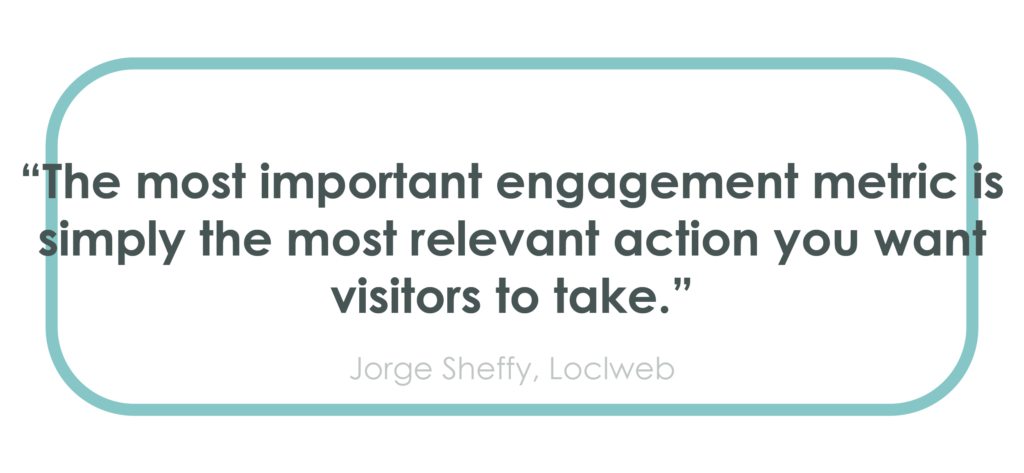Which Metrics Should You be Tracking On Your Self Storage Website?
Your website marketing strategy shouldn’t be a game of Clue. You don’t want to know that Mr. Customer killed the conversion with a click because it took him 10 minutes to find the Online Rental page. It’s not so much a matter of finding data. It’s knowing what matters most to your business and keeping track of those key metrics.
With the right website metrics, you can determine which marketing efforts are working and which are not. If you’re not sure which website metrics to measure, your digital marketing agency will educate you on which metrics will be most useful in boosting your website traffic.
The following information will help you to work with your marketing team or agency to understand exactly what you’re measuring.
Top Website Metrics to Track

Overall Traffic
The most important metric you should be tracking is the number of visitors to your site. Before you can determine engagement, you need traffic. If you have few visitors, the other metrics covered here will be meaningless. You want your incoming traffic to come from a mix of different sources so that you can clearly understand which campaigns are working.
The three chief sources of website traffic are direct visitors, search visitors and referral visitors.
- Direct visitors enter your site by typing the URL directly into their browser.
- Search visitors arrive at your site through search engines like Google or Yahoo.
- Referral visitors come to your site through a blog or a site that is mentioned by your brand.
Each one of these traffic sources works differently, so you’ll want to examine them separately to identify areas that need improvement. For example, if you’ve been focusing on the creation of keyword rich content that will drive more traffic to your site, your organic search volume should show an increase. If any of your traffic sources are showing higher bounce rates, you can revisit your strategy to explore how you can attract more qualified leads to your site.

Bounce Rate
If a prospect lands on your homepage and leaves immediately, this is considered a bounce. Bounce rate is one of your most important website metrics, because it shows the percentage of people who left your website immediately after looking at the page. Your goal is to keep the bounce rate low. Therefore, if a particular page is experiencing a high bounce rate, it’s important to understand the reason.
A high bounce rate indicates a disconnect between visitor interest and the content on your website. Give your visitors relevant, captivating content or they’ll be bouncing like they’re on a trampoline.
Here are some suggestions to lower your bounce rate:
- You can update your website content so that new visitors will find it relatable and engaging.
- You can refine and re-evaluate your target audience to attract people who are interested in your products and services.
Session Duration
Session duration is the amount of time a visitor is active on your website. The key term here is “active.” If your website isn’t based on interactions, Google Analytics will consider the session closed after 30 minutes.
To illustrate, most self storage websites are focused on displaying self storage unit sizes, types and prices as well as links to resources, tips and things like truck rental. These pages make session duration a prime indicator of interest. On the contrary, a site that contains long videos or lengthy blogs may not be as reliable a metric, because your visitors will not click on as many pages.
Conversion Rate
Conversion rate is a representation of the percentage of people who have converted on each page of your website. Conversion can mean either filling out a lead form or purchasing self storage services. In this situation, conversion is based on what your visitors do on that specific page. High conversion rates mean that the page is performing well.
Compare conversion rates of different landing pages to fully understand what design elements and content are appealing to your target audience. Pages with lower conversion rates can be adjusted to improve design and content to increase conversion.
Device Source
Why is device source so important? Back in 2016, Google announced that they would be changing the index algorithm to focus on mobile users. What exactly does this mean? Starting last month (March, 2021), Google will get the information for your site from the mobile version. The mobile version of your site needs to be as content rich and complete as the desktop version.
Another reason to track the device source metric is to discover the top device types (PC, smartphone, or tablet) that people are using to access your site. You can also see the top operating systems (iOS, Android, Windows) and the top browsers (Chrome, Safari and Firefox). Being aware of this information will help you to better optimize your website so that it will adapt to any device it is being viewed on.
Summing Up
The strategy to using these website metrics effectively is to identify the specific metrics that can aid you in assessing whether your website is leading to conversions. Don’t try to measure all metrics at once, because you’ll be overwhelmed and obsessed with numbers. Instead, your focus should be on obtaining insights from your website metrics that will improve user experience.
According to HostPapa, “most of these measures can be improved using three tactics:
- Ensuring content relevancy (making sure you’re covering the topics that your users expect to find in your page, according to their search intent)
- Optimizing technical SEO aspects, such as Page Speed
- Having a cohesive, intuitive design.”
Make sure you’re tracking the most important metrics for your self storage website!


